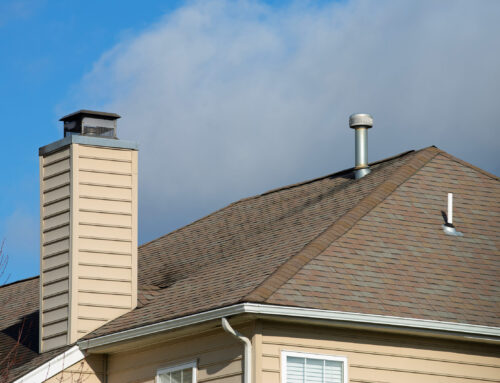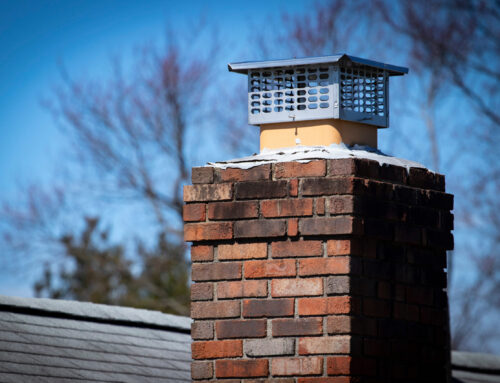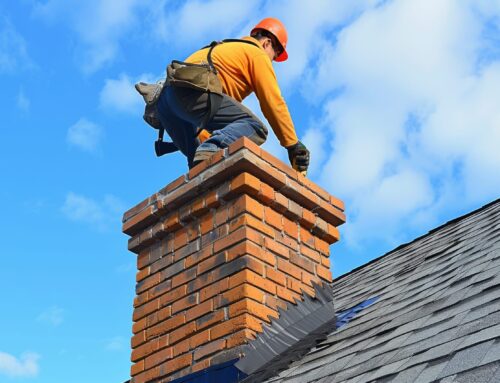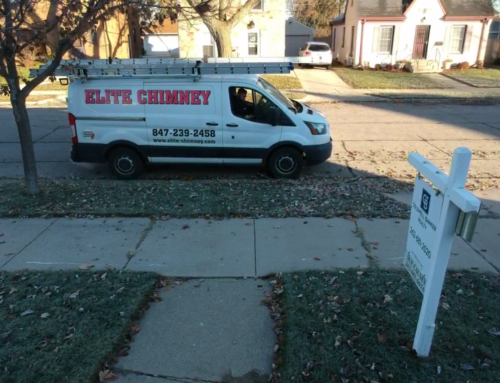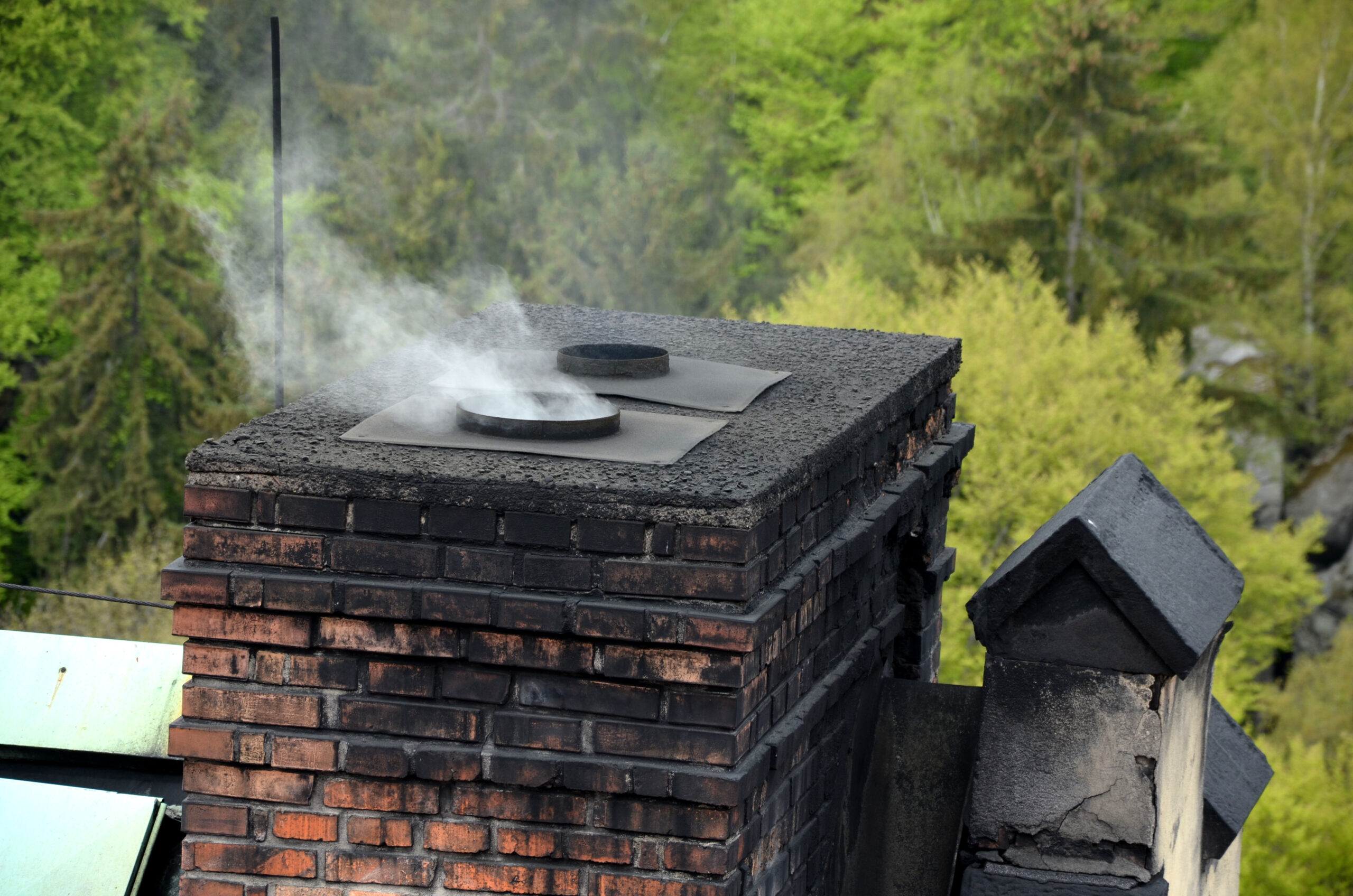
Why Soot and Creosote Matter for Your Home’s Safety
Soot in chimney vs creosote is more than a vocabulary lesson. It is a safety topic every homeowner with a fireplace, stove, or furnace should understand. Knowing the difference helps you spot warning signs early, schedule service at the right time, and keep your family safe from chimney fires and carbon monoxide. In this guide, the certified chimney sweeps at Elite Chimney explain how to identify soot and creosote, when to clean, and how to prevent dangerous buildup.
What Is Soot in a Chimney?
Soot is a fine black powder that forms when fuel does not burn completely. In a wood-burning fireplace or stove, soot is made up of tiny carbon particles. It looks dry, feels soft or slightly oily, and can be brushed or vacuumed away with the right tools. Gas and oil appliances can also produce soot, but in lower amounts if they are tuned correctly. A small amount of soot in chimney systems is normal. Heavy layers are a sign of poor combustion, restricted airflow, or insufficient maintenance. Excessive soot reduces draft, stains walls and mantels, and can contribute to bad odors when the fireplace is not in use.
What Is Creosote?
Creosote is a tar-like byproduct of wood smoke. As smoke cools on its way up the flue, vapors condense and form creosote deposits. Unlike soft soot, creosote can be sticky, crunchy, or rock-hard, and it is highly flammable. Creosote buildup is a leading cause of chimney fires. It tends to form faster when wood is not fully seasoned, the fire smolders at low temperatures, the damper is partially closed, or the flue is oversized or cold. Creosote can also form in wood stoves with long, cool vent runs, and on the inside of metal or masonry flue liners.
Soot vs Creosote: Key Differences You Can Spot
- Appearance: Soot is dull black and powdery. Creosote can be dark brown or black and may look shiny or glazed.
- Texture: Soot wipes off easily. Creosote ranges from sticky to flaky to hardened glaze that feels like glass.
- Location: Soot often coats the firebox and lower flue. Creosote builds throughout the flue, especially near cooler sections and the cap.
- Smell: Soot has a mild ash odor. Creosote smells sharp and smoky, especially in humid or rainy weather.
- Flammability: Soot is combustible. Creosote is highly flammable and can ignite quickly at normal operating temperatures.
- Cleanup: Soot is brushable. Hard glazed creosote often requires specialized tools or chemical treatment.
Warning Signs You Have Too Much Buildup
- Black flakes or crunchy deposits falling into the firebox when you open the damper
- Persistent smoke entering the room or a strong campfire smell when the fireplace is cold
- Dark stains on the face of the fireplace or around the damper area
- Hard or shiny deposits on the flue walls or chimney cap
- Poor draft, slow starting fires, or frequent need to open windows to get fires going
- Loud popping or rumbling noises during a burn, which can indicate a chimney fire
- Excessive soot on glass doors that returns quickly after cleaning
When to Clean: Schedules and Triggers
The National Fire Protection Association recommends that all chimneys, fireplaces, and vents be inspected at least once a year and cleaned as needed. If you use your fireplace or wood stove often, you may need cleaning more than once per season. A common rule of thumb is to schedule a cleaning when soot or creosote reaches 1/8 inch thick anywhere in the system. If you cannot tell how deep the deposits are, it is time to call a professional. Elite Chimney can measure deposits, inspect hidden areas, and give you a clear, written report.
- Every year before the heating season starts
- Any time you see 1/8 inch of soot or creosote in the flue
- After a chimney fire or if you suspect one occurred
- When you move into a new home with a fireplace or stove
- After switching fuels or installing a new liner, stove, or insert
- If you notice draft problems, heavy odors, or visible flakes on the smoke shelf
How to Check Safely at Home
You can do a quick visual check between professional inspections to help spot excessive soot in chimney systems. Always wait until the appliance is completely cool. Work with good lighting and do not climb on the roof unless you are comfortable and equipped for ladder safety. If anything seems off, stop and schedule a professional inspection with Elite Chimney.
- Open the damper fully and shine a bright flashlight up the flue
- Use a small mirror to see behind the damper area and into corners
- Look for black, flaky deposits or shiny glaze on the flue walls
- Check the smoke shelf and firebox for falling chips or hard chunks
- Inspect the chimney cap from the ground with binoculars if possible
- Do a scratch test. If deposits smear like tar or feel like glass, you likely have creosote
- Never scrape aggressively, and never use chemicals without proper training
Dangers of Ignoring Soot and Creosote
Letting soot and creosote build up is risky. Creosote ignites at a lower temperature than you might expect. A hot fire, a stray spark, or a sudden rush of oxygen can start a chimney fire that spreads quickly. Even a small, slow-burning chimney fire can crack clay tiles, damage mortar joints, or warp a metal liner. Once the flue is compromised, heat and embers can reach nearby framing and insulation. Soot and creosote also restrict airflow, causing poor combustion and raising carbon monoxide levels. You may smell more smoke and notice headaches or fatigue, which are warning signs to stop using the appliance and call a certified sweep. In addition, heavy soot in chimney systems can leave permanent stains on masonry, corrode metal, and reduce the life of your fireplace components. Many insurers expect regular maintenance. Skipping annual inspections could complicate claims after a fire event.
Prevention: Smart Burning and Ventilation
- Burn seasoned hardwood with a moisture content of 20 percent or less
- Store wood off the ground and covered on top while leaving the sides open for airflow
- Start fires with the top-down method to get the flue hot quickly
- Keep fires small to medium and well ventilated, avoid long smoldering burns
- Open the damper fully before lighting and keep it open until ashes are cold
- Warm a cold flue with a rolled newspaper near the throat on very cold days
- Never burn trash, glossy paper, or treated or painted wood
- Have gaskets, doors, and seals checked so the appliance gets the right amount of air
- Install a quality chimney cap to block debris, rain, and animal nests
- Schedule annual inspections with a Certified Chimney Sweep like Elite Chimney
Creosote Levels and How They Are Cleaned
Stage 1 Creosote
Stage 1 is a light, soot-like deposit that brushes away easily. If your fires are hot and your wood is dry, deposits often stay in this stage. A standard chimney sweeping with professional rods, brushes, and a HEPA vacuum removes Stage 1 buildup and restores proper draft. Elite Chimney includes a basic safety check and visual inspection as part of routine service.
Stage 2 Creosote
Stage 2 is a flaky or crunchy deposit that can form sheets. It is more stubborn than soot and may require specialized brushes, rotary cleaning tools, or scraping devices. If not handled correctly, pieces can fall and clog the smoke shelf or damper area. Elite Chimney uses industry-grade tools and containment methods to remove Stage 2 creosote without spreading soot into your living space.
Stage 3 Creosote
Stage 3, often called glazed creosote, is hard and shiny like black glass. It does not brush off. Depending on the flue and severity, it may require chemical treatment to break it down, rotary chains, or partial liner replacement if the flue has been damaged. After a chimney fire, Stage 3 is common. Elite Chimney will document the condition with photos and a video scan, then recommend the safest path to restore your system.
DIY or Professional? What Homeowners Should Know
Light soot in chimney systems may seem easy to sweep, but there is more to the job than pushing a brush. Professionals carry ladders, roof safety gear, sectional rods, HEPA vacuums, soot barriers, cameras, and lights. They also know how to access smoke chambers, offsets, and caps that are easy to miss. Most importantly, a certified sweep can spot cracks, missing mortar, loose tiles, failing liners, and improper clearances that put your home at risk. If you want to try minor maintenance, clean the firebox and andirons, remove small ash piles, and wipe the glass with approved cleaners. Leave flue cleaning, smoke chamber work, and rooftop tasks to the pros. Elite Chimney is a Certified Chimney Sweep company, and our technicians follow industry standards to protect your home and family.
How Elite Chimney Cleans and Inspects
Elite Chimney LLC is based in Kenosha, Wisconsin, and serves Southeastern Wisconsin and Northeastern Illinois. Our process is designed for safety, cleanliness, and clear communication. Expect friendly service, fair pricing, and detailed reports without surprises.
- Initial safety check and discussion of any smoke or odor issues
- Protective coverings for flooring and nearby furniture to keep your home clean
- HEPA vacuum setup for dust control during sweeping
- Mechanical brushing of the flue, smoke chamber, and firebox as needed
- Inspection of the cap, crown, flashing, and masonry or metal liner
- Video scan when appropriate to locate hidden damage or blockages
- Written report with photos and recommendations
- Final walk-through and cleanup so you can use your space right away
Elite Chimney Services That Help Prevent Future Buildup
- Chimney Cleaning and Inspection: Keep systems efficient and safe all season
- Chimney Liners: Install or repair liners to improve draft and reduce creosote formation
- Chimney Leaks: Fix crowns, flashing, and masonry to stop water damage that can trap soot and odors
- Chimney Caps and Dampers: Keep out rain, animals, and debris while improving airflow control
- Chimney Rebuilding: Restore stability and performance to aging or damaged chimneys
- Gas Fireplaces and Gas Log Sets: Installation, service, and tuning to reduce soot and improve flame quality
- Fireplace Refacing: Upgrade the look and function of your hearth while maintaining safety
Serving Southeastern Wisconsin and Northeastern Illinois
Elite Chimney serves homeowners throughout our region with fast scheduling and dependable service. If you see soot in chimney areas or suspect creosote, our local team can help.
- Wisconsin: Kenosha County including Kenosha, Pleasant Prairie, Bristol, and Salem, plus nearby communities. Racine County including Racine, Mount Pleasant, and Waterford.
- Illinois: Lake County including Zion, Waukegan, Gurnee, Lake Forest, Highland Park, Libertyville, and surrounding cities.
Frequently Asked Questions About Soot in Chimney and Creosote
Is soot in chimney normal?
A small amount of dry soot is normal with regular use. Heavy soot, fast return of soot after cleaning the glass, strong odors, or visible flakes in the firebox are signs that your system needs service. If you are unsure, schedule an inspection with Elite Chimney for a clear assessment.
How much creosote is too much?
If soot or creosote is 1/8 inch thick anywhere in the flue, it is time to clean. Shiny or glazed deposits, even if thinner, are a concern because they are hard and flammable. Do not burn until a certified sweep evaluates the system.
Can I burn a chimney cleaning log to solve buildup?
Cleaning logs can help dry out Stage 1 creosote and make it easier to brush off, but they do not replace a professional cleaning. They are not effective on heavy or glazed creosote. Think of them as a supplement, not a solution.
Why do gas fireplaces sometimes have soot?
Gas appliances should burn clean. Soot on logs or glass often means the air-fuel mix is off, the burner is dirty, or the logs are misaligned. Turn the unit off and call Elite Chimney for service. Do not move gas logs unless the manufacturer’s instructions say it is allowed.
What does a chimney fire look or sound like?
Signs include loud roaring, popping, or rumbling, glowing or visible flames in the flue, dense smoke, and intense heat. Some chimney fires are quiet and slow and may go unnoticed until damage is found. If you suspect a fire, call 911, then arrange a full inspection before using the fireplace again.
Practical Tips to Reduce Soot and Creosote
Small adjustments in how you burn and maintain the system can make a big difference. Focus on airflow and fuel quality. Keep the flue warm, the burn hot, and the fuel dry. If your fires tend to smolder, work on improving the draft with proper damper use and by preheating the flue. Make sure your home has adequate makeup air, especially in tight houses or when kitchen or bath fans are running. Regular visits from Elite Chimney help fine-tune performance and keep everything safe.
Why Choose Elite Chimney
Elite Chimney LLC is a Certified Chimney Sweep company trusted by homeowners in Kenosha, Racine, and Lake County. We keep prices competitive by minimizing overhead and focusing on what matters most: expert service, honest recommendations, and your safety. Our technicians follow high industry standards and deliver clean, efficient work on every visit. Whether you see soot in chimney areas, suspect creosote, or need repairs, we are ready to help.
Ready to Schedule Your Chimney Inspection?
If you notice soot in chimney spaces, a strong smoky odor, or slow-starting fires, do not wait. Book your inspection or cleaning with Elite Chimney today. We will explain what we find, show you photos, and recommend the right steps to keep your home safe and your fireplace enjoyable.
Contact Elite Chimney LLC
- Address: 2100 82nd Street, Kenosha, WI 53143
- Phone: 262-358-4010
- Email: contact@elite-chimney.com
- Website: https://elite-chimney.com
From routine cleanings to complex repairs, Elite Chimney is your local partner for reliable, efficient, and safe chimney care. Schedule now to enjoy a warmer, cleaner, and safer home this season.

